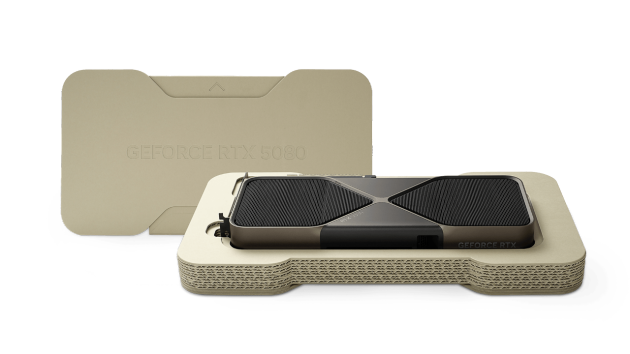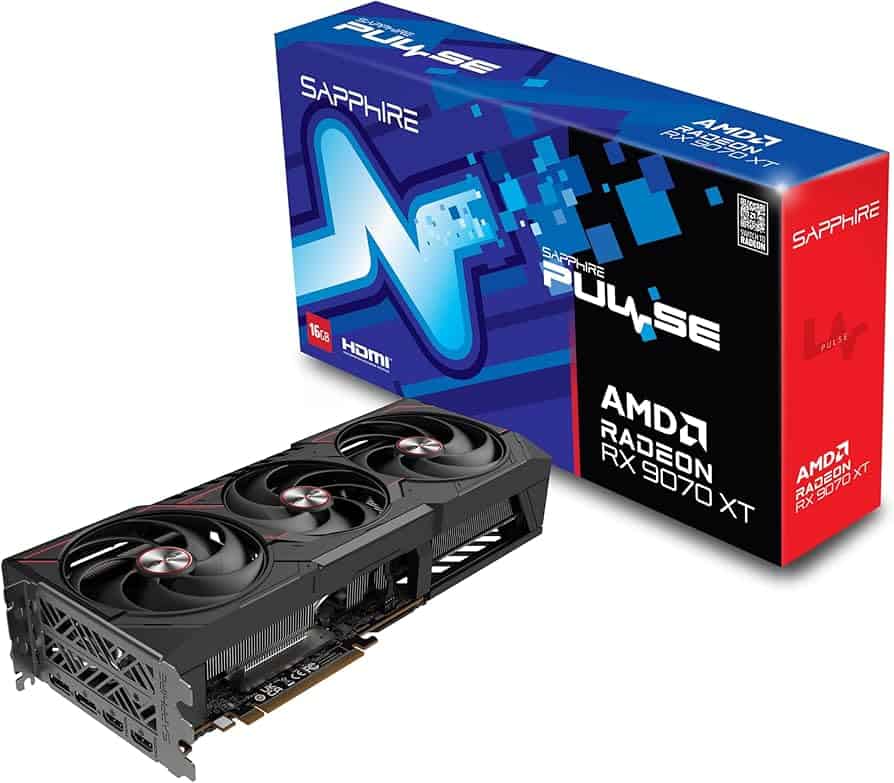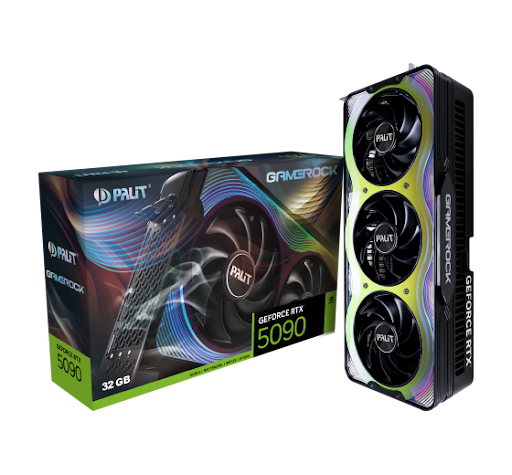The world of gaming GPUs has entered a transformative phase in 2025. With NVIDIA’s AI-focused Blackwell architecture, AMD’s RDNA 4 leap in efficiency, and Intel quietly disrupting the midrange, there’s never been a more exciting—or more complex—time to buy a graphics card. From flagship monsters like the RTX 5090 to budget-friendly champions like the RX 7600, the choices today reflect not just generational improvements, but a fundamental shift toward smarter, more efficient computing.

High-End GPUs: 4K Powerhouses with AI Muscle
| GPU | VRAM | Architecture | Key Features | MSRP | Ideal For |
|---|---|---|---|---|---|
| NVIDIA RTX 5090 | 32GB GDDR7 | Blackwell | DLSS 4 w/ Multi-Frame Gen, 512-bit bus | $1,999 | 4K Ultra Gaming, AI/Pro workloads |
| AMD RX 9070 XT | 16GB GDDR6 | RDNA 4 | FSR 4, improved ray tracing | $599 | 4K on a budget, high-end 1440p |
NVIDIA RTX 5090
This card is in a class of its own. It’s not just built for gaming, but for AI workloads, 3D rendering, and machine learning. DLSS 4’s Multi-Frame Generation uses AI to interpolate full frames, boosting framerate without impacting visual fidelity. It’s the go-to card for high-end gamers and creators—if you can handle the 575W power draw and sky-high price.
AMD RX 9070 XT
The RX 9070 XT is a value-performance marvel. It doesn’t reach the peak frame rates of the RTX 5090, but its RDNA 4 architecture closes the ray tracing gap more than ever, and FSR 4 now uses AI enhancements to improve upscaling quality. It’s arguably the best high-end value in 2025.

⚖️ Midrange GPUs: 1440p Gaming’s Sweet Spot
| GPU | VRAM | Upscaling | MSRP | Notable Strengths |
|---|---|---|---|---|
| NVIDIA RTX 5070 | 12GB GDDR7 | DLSS 4 | $549 | Strong 1440p & light 4K |
| AMD RX 9060 XT | 8GB or 16GB GDDR6 | FSR 4 | $299 / $349 | Competitive price, efficient |
| Intel Arc B580 | 12GB GDDR6 | XeSS | ~$329 | Entry-level 1440p, great pricing |
RTX 5070
If you’re gaming at 1440p and want a future-proof card, this is the smart pick. It inherits DLSS 4 and strong ray tracing capabilities from its flagship siblings, delivering excellent performance at a still-manageable price point.
AMD RX 9060 XT
Launching June 5, this card is AMD’s answer to the mainstream demand. Early benchmarks show parity with Nvidia’s 5060 Ti, and its 16GB variant future-proofs for heavier games. It’s efficient, affordable, and benefits from AMD’s generational gains in power per watt.
Intel Arc B580
While Intel still lags in ray tracing performance, driver support has improved drastically. The B580 now offers stable 1440p gameplay and undercuts AMD and NVIDIA on pricing, making it a sleeper hit for budget builders.
Budget GPUs: 1080p Done Right
| GPU | VRAM | Features | MSRP | Best Use Case |
|---|---|---|---|---|
| NVIDIA RTX 5060 | 8GB GDDR7 | DLSS 4 | $299 | 1080p Ultra, some 1440p |
| AMD RX 7600 | 8GB GDDR6 | FSR 3 | $269 | Solid 1080p at great value |
RTX 5060
While it’s not a massive leap from the 4060, DLSS 4 support makes a big difference. AI-driven frame generation helps the 5060 punch above its weight in many newer titles. Still, lack of reviews at launch means caution is warranted.
RX 7600
Holding steady as a budget favorite, the RX 7600 continues to provide reliable 1080p gaming. With widespread availability and mature drivers, it’s a smart pick for entry-level PCs or competitive gamers.
The Rise of AI in Gaming GPUs
Both NVIDIA and AMD are embedding AI deeper into their GPU pipelines. DLSS 4 on Blackwell cards now generates full frames rather than partial reconstruction—dramatically improving motion fluidity. Meanwhile, AMD’s FSR 4 introduces its own AI upscaling, finally matching DLSS in many scenarios.
Intel’s XeSS also gets more polished in 2025, supported in more games and no longer plagued by its rocky launch. Upscaling technologies are no longer extras—they’re essential tools for modern performance.
What’s Next: The APU Revolution & Beyond
One of the biggest developments in the pipeline is NVIDIA’s rumored 120W Arm-based APU—a single chip combining CPU, GPU, and NPU. Early leaks suggest it could deliver RTX 4070-level gaming power in laptops with dramatically reduced heat and battery drain. If this tech makes it to desktops, it could mark a paradigm shift, especially in compact form factor builds.
🧾 Buying Advice: What to Know Before You Choose
| Consideration | Why It Matters |
|---|---|
| Resolution & Refresh Rate | A 4K 144Hz display needs far more GPU muscle than 1080p 60Hz. Don’t overspend for unused power. |
| AI Upscaling Support | DLSS and FSR are game-changers. Choose a GPU with strong support in the games you play. |
| Ray Tracing Performance | Ray tracing still varies wildly. NVIDIA leads, but AMD is catching up fast. Intel is improving but lags behind. |
| Power Draw | New GPUs are powerful—but power-hungry. Ensure your PSU is sufficient. |
| Software Ecosystem | NVIDIA’s GeForce Experience, AMD’s Adrenalin, and Intel’s Arc Control all offer game tuning, recording, and streaming features. |
| Resale Value | NVIDIA cards tend to retain higher value on the secondhand market due to broader demand and software stability. |

In 2025, GPUs are more than graphics processors—they’re AI engines, creators’ tools, and game changers in every sense. Whether you’re chasing the highest frames, best ray tracing, or the most bang for your buck, today’s landscape has something for every kind of gamer. Just make sure you’re buying for the games you play and the monitor you own—not just for the hype.
Best GPUs for Gaming and Content Creation in 2025
Finding the right graphics card can make a big difference in your gaming or work setup. The market has many options at different price points, from budget-friendly cards to high-end powerhouses. The best GPU for you depends on what you need it for, whether that’s playing the latest games or running complex design software.
Shopping for a new GPU means looking at things like memory, speed, and cooling. Some top picks for 2025 include the RTX 4070 Super for mid-range use and the RTX 5090 for those who want the absolute best performance. The right choice will help your computer run smoothly for years to come.
1. Nvidia GeForce RTX 5090
The GeForce RTX 5090 stands as Nvidia’s most powerful consumer graphics card to date. Released in early 2025, this GPU represents the pinnacle of the 50-series lineup and offers substantial improvements over previous generations.
Performance tests show the RTX 5090 is the first card to truly surpass the RTX 4090 in raw power. Benchmark results confirm it’s currently the fastest consumer GPU in the world, making it the clear choice for those who demand absolute top performance.
The card brings significant upgrades to ray tracing capabilities. Its improved RT cores handle complex lighting calculations more efficiently, resulting in more realistic gaming environments with less performance impact.
One of the most talked-about features is DLSS 4 with Multi Frame Generation, which takes AI upscaling to new heights. This technology creates multiple frames simultaneously, boosting frame rates dramatically while maintaining excellent image quality.
Power consumption remains a consideration. While Nvidia has made efficiency improvements, the RTX 5090 still demands a robust power supply and cooling system. Most reviews recommend at least an 850W PSU for systems using this card.
Thermal performance has seen improvements over previous generations. The Founders Edition model features an enhanced cooling design that keeps temperatures in check even during intensive gaming or rendering sessions.
Price continues to be a major factor. The RTX 5090 commands a premium price tag that puts it out of reach for most mainstream gamers. It’s primarily targeted at enthusiasts, content creators, and professionals who can utilize its immense processing power.
For gamers with 4K and 8K displays, the RTX 5090 delivers smooth frame rates in the most demanding titles. It especially shines when ray tracing is enabled, maintaining playable performance where previous cards struggled.
2. AMD Radeon RX 9070 XT
The AMD Radeon RX 9070 XT has emerged as one of the strongest GPU options in 2025. Based on the RDNA 4 architecture, this card delivers exceptional performance at a price point that won’t break the bank.
Reviews show the 9070 XT performs similarly to the 5070 Ti, yet costs less at under $600. This price-to-performance ratio makes it a standout choice for gamers looking to upgrade.
For those wanting smooth 4K gaming, the 9070 XT handles this demand easily. Tests indicate it maintains high frame rates even in demanding titles without requiring extreme power consumption.
The card comes in several manufacturer variants. Popular models include the Sapphire Nitro+, PowerColor Red Devil, and Gigabyte Gaming OC. Each offers slightly different cooling solutions and factory overclocks.
Ray tracing performance has improved significantly with this generation. While not quite matching Nvidia’s specialized hardware, the gap has narrowed considerably compared to previous AMD offerings.
Power efficiency stands out as a key strength. The RDNA 4 architecture delivers notable generational improvements in this area, meaning lower electric bills and less heat output during gaming sessions.
For style-conscious builders, options like the Asus TUF Gaming OC and Gigabyte Aorus Elite provide RGB lighting and premium designs that complement modern PC builds.
Benchmarks show the 9070 XT handles modern titles at 1440p with ease, often hitting well above 100 FPS. At 4K, most games remain playable at 60+ FPS with high settings.
Driver support has improved significantly, with AMD addressing past stability issues through regular updates. Most games work flawlessly at launch, a welcome improvement from earlier Radeon generations.
3. Nvidia GeForce RTX 5080
The RTX 5080 represents Nvidia’s latest high-end GPU offering that sits just below their flagship model. Released in early 2025, this graphics card has quickly become a top choice for serious gamers and content creators.
Performance tests show the RTX 5080 delivers impressive frame rates in modern games at 4K resolution. Most reviewers agree it provides approximately 25-30% better performance than the previous generation RTX 4080.
Availability has been a significant challenge. The RTX 5080 is currently in extremely short supply, as is its main competitor from AMD.
Several manufacturers offer custom versions of the RTX 5080. The ASUS ROG Astral RTX 5080 OC stands out with its unique four-fan design and a built-in GPU holder. Tests indicate it performs about 6% faster than Nvidia’s Founders Edition in 4K gaming.
Cooling solutions vary significantly between models. Buyers should consider their case airflow and noise tolerance when selecting a specific variant. Most premium models include dual BIOS options for performance or quiet operation.
ASUS products are often considered top-tier in the GPU market. Their TUF Gaming model offers an excellent balance of cooling performance and build quality at a competitive price point.
Power requirements remain substantial. The RTX 5080 typically needs a quality 850W power supply and draws around 320W during gaming sessions. The card requires the newer power connector standard introduced with the previous generation.
Ray tracing capabilities have improved notably. Games supporting this technology run much smoother than on previous cards, making realistic lighting effects more practical at higher frame rates.
For those who can find one in stock, the RTX 5080 represents a worthwhile upgrade for gamers using cards from two or more generations back. However, RTX 4080 owners might want to wait unless they specifically need the performance boost for professional applications.
4. Nvidia GeForce RTX 4070 Super
The RTX 4070 Super stands out as a top gaming GPU option in Nvidia’s lineup. Released as an upgrade to the base 4070, this card offers improved performance while maintaining a reasonable price point.
At a starting price of $549, the 4070 Super delivers excellent value for gamers seeking high-end performance without breaking the bank. It sits comfortably between the standard 4070 and the more expensive 4070 Ti in Nvidia’s product stack.
Performance-wise, the 4070 Super shows significant improvements over its predecessor. Tests reveal it handles modern games at 1440p resolution with ease, often maintaining high frame rates even with ray tracing enabled.
Different manufacturers offer various versions of the 4070 Super. The PNY XLR8 model is considered among the best options according to some users, featuring a triple-slot design for better cooling.
Cooling solutions vary across models, with most featuring either dual or triple fan designs. Better cooling typically allows for more stable boost clocks and quieter operation during intense gaming sessions.
Power requirements are modest compared to higher-end cards, making the 4070 Super compatible with a wider range of existing power supplies. This can be an important consideration for users upgrading without replacing their entire system.
The card features NVIDIA’s Ada Lovelace architecture, bringing improvements in ray tracing and DLSS capabilities. These technologies help boost frame rates in supported games while maintaining visual quality.
For those deciding between models, factors like price, cooling design, and size should guide the choice. Some versions offer factory overclocks for slightly better performance, though the differences are often minimal.
When considering timing, some experts suggest that upcoming AMD RX 9070 XT and future RTX 5070 Ti might offer better performance at similar price points. This is worth thinking about for buyers not in immediate need of an upgrade.
5. AMD Radeon RX 7900 GRE
The AMD Radeon RX 7900 GRE offers solid performance for gamers seeking a high-end graphics card. This GPU sits between the RX 7800 XT and RX 7900 XT in AMD’s lineup, giving players another option in the premium segment.
Performance benchmarks show the 7900 GRE competing well against NVIDIA alternatives. At 1440p resolution, it achieves around 118 FPS in many games, putting it on par with the RTX 4070 Ti and RTX 3080 Ti in several tests, though the older 6950 XT sometimes edges slightly ahead.
Multiple manufacturers offer versions of the 7900 GRE, each with different cooling solutions and designs. Sapphire’s Nitro+ model stands out as one of the best performing options, though it comes at a premium of about $50 over MSRP.
Other notable manufacturers include ASUS, Gigabyte, PowerColor, ASRock, and XFX. Each brand offers its own take on the 7900 GRE with varying clock speeds, cooling capabilities, and aesthetic designs.
When shopping for a 7900 GRE, buyers should consider factors beyond just the brand. Cooling performance, warranty terms, and build quality can differ significantly between models, affecting both longevity and gaming experience.
Price points vary across the different versions, with some offering better value than others. The XFX model is often recommended by community members for its balance of performance and price.
For those interested in comparing different models, several tech websites and YouTube channels have published comprehensive reviews. One such review examines six different 7900 GRE cards from major manufacturers, helping buyers make informed decisions.
The 7900 GRE represents a strong option for gamers who want high-end performance without stepping up to the more expensive 7900 XT or competitor’s flagship models.
6. Nvidia GeForce RTX 4070 Ti
The Nvidia GeForce RTX 4070 Ti offers strong performance for gamers who want high-end features without paying premium prices. Released as part of Nvidia’s 40-series lineup, this GPU sits in the sweet spot between mid-range and high-end options.
Price-wise, the 4070 Ti typically retails around $799, making it more accessible than the flagship models while still delivering impressive capabilities. It uses Nvidia’s Ada Lovelace architecture, which brings significant improvements in ray tracing and AI-powered features.
For gamers looking at different models, several manufacturers offer their own versions. The Gaming Trio X from MSI gets positive mentions for both looks and performance, especially when mounted vertically. Gigabyte and Asus also make solid alternatives depending on your preferences.
The card handles 4K gaming well, though it truly shines at 1440p resolution where it can maintain high frame rates even with demanding titles. Its DLSS 3 technology helps boost performance further by generating additional frames using AI.
Power consumption is reasonable compared to higher-tier cards, making it easier to fit into existing systems without needing a power supply upgrade. Most models require a single 8-pin or 12-pin power connector.
Nvidia has expanded the 4070 family to include the 4070 Ti SUPER variant, which offers enhanced specifications for those willing to spend a bit more. The standard 4070 Ti still represents excellent value for most users.
Cooling solutions vary between manufacturers, but most designs keep temperatures well controlled even under heavy loads. Three-fan designs are common on premium models and help maintain lower noise levels during intense gaming sessions.
7. AMD Radeon RX 7900 XTX
The AMD Radeon RX 7900 XTX stands as AMD’s flagship graphics card for demanding gamers and content creators. It delivers excellent 4K gaming performance while being more affordable than competing high-end options.
This powerful GPU typically costs around $900, which is steep but justified by its incredible performance. The 7900 XTX features AMD’s RDNA 3 architecture, 24GB of GDDR6 memory, and a wide memory bus that handles modern games with ease.
For those concerned about brand variants, the Sapphire Nitro+ Vapor-X Edition is widely considered the best version available. Other top-tier models include the PowerColor Red Devil, XFX Merc, and Sapphire Pulse, all offering similar high-end performance.
The 7900 XTX shines brightest at 4K resolution where it can push high frame rates in most titles. Its ray tracing capabilities have improved over previous AMD generations, though still lag slightly behind NVIDIA’s offerings in this specific area.
Power efficiency is another strong point for this card. It consumes less electricity than comparable NVIDIA options while still delivering competitive frame rates in most situations.
Cooling solutions vary between manufacturers, but most 7900 XTX cards handle heat well. The card’s size is substantial but not as massive as some competing models, making it easier to fit in standard cases.
AMD’s driver support continues to improve, with regular updates enhancing performance and fixing issues. The card supports AMD FSR technology, which boosts frame rates through intelligent upscaling.
8. Nvidia GeForce RTX 4060
The RTX 4060 sits in Nvidia’s lineup as a mid-range option for gamers who want good performance without breaking the bank. Released as part of the 40-series, this GPU offers reasonable 1080p gaming performance and some 1440p capabilities.
This card comes with 8GB of GDDR6 memory, which is adequate for most current games. The RTX 4060 also includes Nvidia’s DLSS technology, which helps boost framerates through AI upscaling.
When choosing between brands, ASUS, MSI Gaming, and Gigabyte models are often considered top choices. The MSI RTX 4060 8GB VENTUS 2X BLACK OC is noted as a popular seller according to some hardware suppliers.
Performance-wise, the RTX 4060 handles most modern games at 1080p with high settings. For competitive gamers, the card includes NVIDIA Reflex technology, which reduces system latency for faster response times.
Power efficiency is a strong point for the 4060, with lower power consumption than previous generation cards. This means less heat and lower electricity bills during long gaming sessions.
Ray tracing performance on the RTX 4060 is decent for a mid-range card, though you’ll likely need to enable DLSS for smoother framerates in ray-traced games. The card supports the full suite of Nvidia’s RTX features.
Despite its strengths, the RTX 4060 faces stiff competition. Some reviews suggest there might be better alternatives depending on your specific needs and budget.
9. AMD Radeon RX 7900 XT
The AMD Radeon RX 7900 XT sits just below AMD’s flagship model in their current lineup. It offers excellent performance for gamers seeking high-end 4K gaming experiences without paying for the absolute top-tier card.
Price-wise, the 7900 XT typically costs around $900-970 depending on the model. The Sapphire Pulse version goes for about $920, while other variants like the XFX Merc 310 and MSI Gaming Trio range between $935-955.
Several manufacturers produce versions of the 7900 XT with different cooling solutions and factory overclocks. Popular options include the PowerColor HellHound, AMD’s Reference Card, and the ASUS TUF Gaming OC model.
The card delivers impressive performance for 4K gaming, though it’s worth noting that the 7900 XTX offers better value for those who can spend a bit more. The XTX variant provides a noticeable performance boost for just a small price increase.
Cooling solutions vary between models, with some running quieter than others. The build quality and thermal performance should factor into buying decisions, especially for those planning to push their system hard.
For most gamers, the 7900 XT hits a sweet spot of performance. It handles modern games at high settings with strong frame rates, making it particularly appealing for those with high-refresh 1440p monitors or 4K displays.
Recent updates show that the Radeon RX 7900 GRE has displaced the RX 7800 XT as Tom’s Hardware’s top AMD pick, though the 7900 XT remains a powerful option in AMD’s high-end lineup.
10. Intel Arc A750
The Intel Arc A750 has become a solid contender in the budget GPU market. After a price drop to $249, it offers impressive value compared to similar cards in its class.
Performance-wise, the A750 outperforms the RTX 3050 by 40-50 percent, making it a much better choice for gamers on a tight budget. It competes directly with cards like the RTX 3060 and AMD’s RX 6600.
For those interested in ray tracing, the A750 delivers better ray tracing performance than other cards in its price range. This makes next-gen lighting effects more accessible to budget-conscious builders.
The card features Intel’s XeSS upscaling technology, which is better than AMD’s FSR according to some users. This helps boost frame rates in supported games without a major hit to visual quality.
Several manufacturers produce the A750, including Intel itself with the Limited Edition model, as well as ASRock, GUNNIR, and Sparkle. Users report that the Intel, ASRock, and Sparkle versions offer good quality.
Intel’s entrance as a third player in the GPU market brings welcome competition. The A750 isn’t dominant, but it’s nice to have another option beyond just NVIDIA and AMD.
Buyers should note that Intel’s graphics drivers have improved significantly since launch, but some games may still have compatibility issues. This is worth considering before purchase.
The A750 comes with 8GB of VRAM and utilizes PCIe 4.0, making it future-proof enough for 1080p and 1440p gaming for the next few years.
For budget-conscious gamers who want to play the latest titles without spending too much, the A750 is one of the better options available today, despite some lingering driver concerns.
Understanding GPU Architecture
Graphics Processing Units (GPUs) have evolved from simple display accelerators to powerful computing engines. Modern GPUs contain thousands of cores working together to process complex graphical and computational tasks simultaneously.
Core Components and Functions
GPUs are built around specialized processing units called Streaming Multiprocessors (SMs) or Compute Units (CUs). Each contains:
- CUDA cores/Stream processors: Handle mathematical calculations
- Texture units: Process and filter image data
- ROPs (Render Output Units): Manage final pixel output to the screen
- Cache memory: Several levels that temporarily store data for quick access
Memory is another critical component. High-end GPUs feature GDDR6 or HBM2 memory with wide memory buses (256-bit to 384-bit) that allow massive data throughput. This enables fast texture loading and buffer processing.
The control logic coordinates these elements through a scheduler that determines which tasks run on which cores. Modern GPUs also include specialized hardware for ray tracing and AI acceleration, helping with realistic lighting and smart upscaling.
Multithreading and Parallel Processing
GPUs excel at parallel processing, handling thousands of threads simultaneously. This architecture is called SIMD (Single Instruction, Multiple Data), where one instruction executes across many data points at once.
When rendering a game frame or processing an AI workload, the GPU divides tasks into small chunks that run concurrently. For example:
- Each pixel in a scene can be calculated independently
- Different parts of an image can be processed simultaneously
- Physics calculations for multiple objects happen in parallel
This approach works because graphics and computational problems are highly parallelizable. While CPUs excel at sequential tasks with complex logic, GPUs handle massive parallel workloads with simpler calculations per thread.
Thread blocks are organized into warps or wavefronts that execute together. This structure enables GPUs to process thousands of operations simultaneously, making them ideal for machine learning, scientific computing, and of course, gaming.
Factors Affecting GPU Performance
When choosing a GPU, several key components affect its overall performance. These include the clock speed, memory bandwidth, power consumption, and cooling solutions that work together to determine how well a graphics card will perform.
Clock Speed and Memory Bandwidth
Clock speed measures how many operations a GPU can perform per second. Higher clock speeds (measured in MHz or GHz) generally mean better performance for gaming and graphics tasks. Modern GPUs like NVIDIA’s RTX 4080 can reach boost clock speeds over 2.5 GHz.
Memory bandwidth determines how quickly data can move between the GPU and its VRAM. This is critical for handling high-resolution textures and complex 3D models. Cards with wider memory buses (256-bit, 384-bit, etc.) typically offer superior bandwidth.
VRAM capacity is another crucial factor. Games at 4K resolution or with complex textures can require 10GB+ of VRAM. Having insufficient VRAM leads to stuttering and performance drops.
The combination of clock speed and memory bandwidth affects frame rates, texture loading times, and overall responsiveness in games and applications.
Thermal Design Power (TDP) and Cooling Solutions
TDP represents the maximum amount of heat a GPU generates under load, measured in watts. Higher-performance cards typically have higher TDP values, often ranging from 200W to over 400W for flagship models.
Effective cooling solutions are essential for maintaining optimal GPU performance. When GPUs get too hot, they throttle their clock speeds to prevent damage, resulting in lower performance.
Common cooling designs include:
- Air cooling: Uses fans and heatsinks
- Liquid cooling: Offers better thermal performance but at higher cost
- Vapor chamber: Advanced solution for premium cards
Case airflow also affects GPU temperatures. A well-ventilated case with strategic fan placement can lower GPU temperatures by 5-10°C compared to cases with poor airflow.
Triple-fan designs generally outperform dual-fan configurations for air cooling, especially during extended gaming sessions or intensive workloads.
Frequently Asked Questions
Graphics card selection depends on your specific gaming needs, budget constraints, and performance expectations. The market offers numerous options ranging from budget-friendly to premium high-end models.
What are the top performance GPUs for high-end gaming?
The Nvidia GeForce RTX 5090 stands as the most powerful GPU currently available. It offers unmatched performance for 4K gaming and demanding applications.
The RTX 5080 delivers excellent high-end performance for serious gamers who want near-flagship capabilities without the extreme price tag of the 5090.
For AMD fans, the Radeon RX 9070 XT provides competitive high-end performance with excellent ray tracing capabilities and strong rasterization performance.
Which graphics cards offer the best value for money?
The RTX 4070 Super hits a sweet spot between performance and price. It handles 1440p gaming exceptionally well and can manage 4K in many titles with some settings adjustments.
The AMD Radeon RX 7900 GRE (Golden Rabbit Edition) offers strong performance-per-dollar value with its 16GB VRAM buffer, making it ideal for texture-heavy games at higher resolutions.
Mid-range options like older RTX 3060 Ti or RX 6700 XT models can still deliver solid 1080p and 1440p gaming performance at more accessible price points.
How does the RTX 4090 compare to other high-tier GPUs?
While the RTX 5090 has now claimed the performance crown, the RTX 4090 still remains a powerhouse. It outperforms many current-generation cards including the 5080 in certain workloads.
The RTX 4090 offers better ray tracing performance than any AMD offering, including the newer 9070 XT. Its DLSS capabilities also remain strong against AMD’s FSR technology.
Price-to-performance ratio is where the 4090 now struggles, as newer options provide better value while the 4090 maintains a premium price point despite being previous generation technology.
What are the best options for budget-conscious gamers seeking a reliable GPU?
The RTX 4060 and RX 7600 provide solid 1080p gaming experiences at reasonable prices. They handle esports titles with ease and can run most AAA games at medium to high settings.
For ultra-budget builds, looking at the used market for cards like the RTX 3050 or RX 6600 can yield significant savings. These cards still handle 1080p gaming adequately.
When shopping on a tight budget, prioritize cards with at least 8GB VRAM to ensure better future compatibility with newer games that have increasing texture memory requirements.
What should I look for when choosing a graphics card for laptop gaming?
Laptop GPUs typically perform 10-20% lower than their desktop counterparts with the same name. A mobile RTX 4070 won’t match a desktop RTX 4070.
Cooling design matters tremendously in laptops. Models with better thermal solutions will maintain higher clock speeds during extended gaming sessions, resulting in better performance.
Battery life takes a significant hit when gaming on dedicated GPUs. Consider laptops with advanced power-switching technologies like NVIDIA Optimus if you need both gaming performance and reasonable battery life.
How do GTX series GPUs differ from RTX series in terms of gaming performance?
RTX cards contain dedicated ray tracing cores and tensor cores that GTX cards lack. This enables features like hardware-accelerated ray tracing and DLSS AI upscaling that can dramatically improve visual quality and performance.
GTX cards from the 16-series (like 1660 Super) can still deliver acceptable 1080p gaming performance but struggle with newer titles that demand more VRAM or advanced features.
The performance gap widens significantly with each new generation. Even entry-level current RTX cards like the 4050 now outperform older high-end GTX cards like the 1080 Ti in many modern games, especially those utilizing RTX-specific features.







